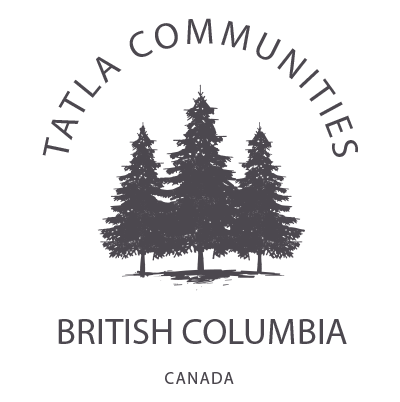What is the Tatla Resource Association? Your questions answered by Dave King, Chairperson of the association.
please share with us a brief history of the TRA. Why was the TRA formed?
The TRA came into being in 1998. It was formed out of the community's interest in resource management decisions being made by government in the West Chilcotin. This planning was pressured into happening by the outbreak of a series of two pine beetle infestations; one in the mid 1970's and the second in the 1980's. The government approach was to harvest (liquidate) the pine forest. This would have had an impact on the whole Chilcotin, both environmentally and socially.
Concerned community members were engaged in the initial process through the various community organizations that were in existence at the time, i.e. The Niut Wilderness, Tatla Lake Livestock, trappers, community associations, etc. Under the banner of the TRA, all of these groups were united in participating in the government's land use planning process. This was in 1998. This continued and concluded with the Cariboo Chilcotin Land Use Plan and then further with the more specific Subregional Plan.
In 2003 the Alexis Creek First Nation, concerned for their traditional territory, formed a relationship with TRA regarding best practises for managing forest resources. This relationship continued and was the beginning of the community forest concept.
What is the composition of the committee, and how is it governed?
With the advent of the Community Forest Program, the TRA and the Alexis Creek First Nation formed the Eniyud Community Forest Ltd., and applied for a community forest licence. This was granted in 2007 and secured a harvesting licence for 40,000 cubic metres over the specific area (probably best shown on a map).
The Eniyud Community Forest is a limited company with 2 share holders; the TRA and the ACFN, each with a 50% interest. Both partners have 3 members each on the board of directors, and we have a hired manager. The elected board members are responsible to report back to our respective communities, with the TRA requiring a minimum of 2 meetings per year, or more often if necessary.
What are the main objectives of the TRA and how does the TRA serve our local community?
The primary purpose of the TRA is to manage resources in an environmentally sustainable manner, while providing local employment and distributing any profits back to the 2 partners.
The primary function of the TRA, since the completion of the planning process, has been participating in the Eniyud Community Forest. Harvesting decisions are made here and special attention is given to hiring a local workforce. We are subject to all provincial regulations and are governed by a Forest Stewardship Plan which is approved by the Crown.
What does membership to the TRA require, and what is the involvement of its members?
The TRA has a membership fee of $20.00 per year and must be paid 30 days in advance of a meeting to qualify to vote. It is also a requirement that you must own property or have lived in the Tatla Lake area for the past 6 months to be a voting member. We have made provisions to include members from outside the area by issuing associate memberships for the same fee, but these members do not have voting privileges.
There is a disbursement committee which is elected and is charged with dispersing any funds which the TRA has received by way of a dividend payout. These funds are the result of profit derived from the sale of wood out of the Community Forest.
What is the aim or the vision of the TRA within the community as we grow and evolve?
It is my hope, and that of the other board members, that the TRA will be become a mechanism for community development. We are a financially sound and enduring association with a clear vision for growing our community. The fact that we have an exclusive licence to harvest all of the forest resources, not just timber, means that we are in a position to direct future developments. Our position is strong one, particularly when you consider our relationship with Alexis Creek First Nation.
I feel that it is important to also emphasize the relationship that the TRA has with the Alexis Creek First Nation. This is particularly so in light of the land claim decision (The William Decision), where aboriginal title has been established.
This is a landmark decision and will have far reaching effects on resource management decisions on "Crown Land". So to be a 50% partner with a First Nation in their traditional territory is quite unique. I think that as we move forward with our Community Forest development plans together with the ACFN, we are in a position to demonstrate to the rest of Canada how a non aboriginal community and a First Nation can function in a business and social relationship.
This is quite a different arrangement than the way that the rest of Canada relates to First Nations. We are partners on their traditional lands, and engaged in the management of the forest resources for the purpose of generating profit and furthering community development.
We do not interact as much as I think we could socially, but I feel that fostering a better relationship is very positive thing for all concerned. This is an opportunity to demonstrate how, as Canadians, we can move forward in the 21st century in a new relationship with First Nations.
TRA Contacts:
Dave King, Chairperson
E: fathergoosedave@gmail.com
Peter Shaughnessy, Director
E: tatlayoko@gmail.com
Kelly Emke, Treasurer
E: kellyemke@gmail.com



